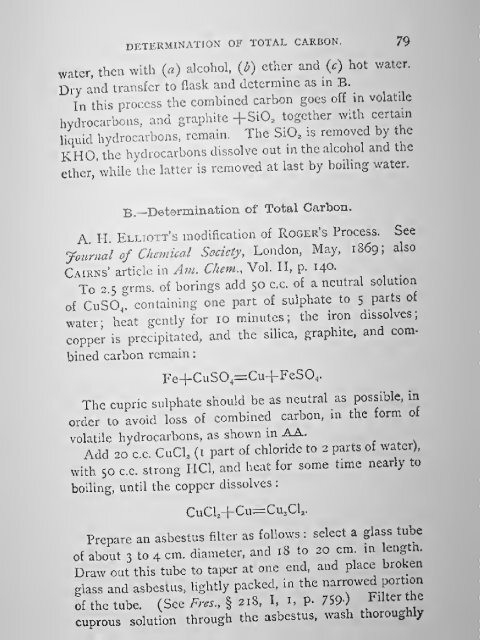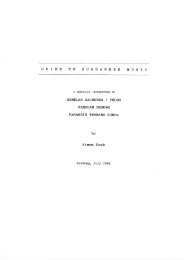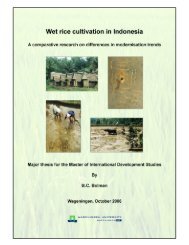The Students' Guide in Quantitative Analysis - Free Ebooks Library
The Students' Guide in Quantitative Analysis - Free Ebooks Library
The Students' Guide in Quantitative Analysis - Free Ebooks Library
You also want an ePaper? Increase the reach of your titles
YUMPU automatically turns print PDFs into web optimized ePapers that Google loves.
DETERMINATION OF TOTAL CARBON. 79<br />
water, then ^vith (a) alcohol, {l>) ether and (c) hot water.<br />
Dry and transfer to flask and determ<strong>in</strong>e as <strong>in</strong> B.<br />
In this process the comb<strong>in</strong>ed carbon goes off m volatile<br />
hydrocarbons, and graphite +SiO. together with certa<strong>in</strong><br />
liquid hydrocarbons, rema<strong>in</strong>. <strong>The</strong> SiO. is removed by the<br />
KHO the hydrocarbons dissolve out <strong>in</strong> the alcohol and the<br />
ether, \vhUe the latter is removed at last by boil<strong>in</strong>g water.<br />
B -Detsrmmatlon of Total Carbon.<br />
A H. Elliott's modification of Roger's Process. See<br />
Journal of Chemical Society, London, May, 1869; also<br />
Cairns* article <strong>in</strong> Am. Chem., Vol. 11, p. 140.<br />
_<br />
To 2.5 grms. of bor<strong>in</strong>gs add 50 ex. of a neutral solution<br />
of CuSO,! conta<strong>in</strong><strong>in</strong>g one part of sulphate to S P^rts of<br />
water; heat gently for 10 m<strong>in</strong>utes; the iron dissolves;<br />
copper is precipitated, and the silica, graphite, and com-<br />
b<strong>in</strong>ed carbon rema<strong>in</strong><br />
:<br />
Fe+CuSO,=Cu+FeSO,.<br />
<strong>The</strong> cupric sulphate should be as neutral as possible, <strong>in</strong><br />
order to avoid loss of comb<strong>in</strong>ed carbon, <strong>in</strong> the form of<br />
volatile hydrocarbons, as shown <strong>in</strong> AA.<br />
Add -o c c CuCl. (I part of chloride to 2 parts of water),<br />
with 50 c.c. strong HCl. and heat for some time nearly to<br />
boil<strong>in</strong>g, until the copper dissolves :<br />
CuCU+Cu=Cu,Cl,.<br />
Prepare an asbestus filter as follows: select a glass tube<br />
of about 3 to 4 cm. diameter, and 1 8 to 20 cm. <strong>in</strong> ength.<br />
Draw out this tube to taper at one end, and place broken<br />
glass and asbestus, lightly packed, <strong>in</strong> the narrowed portion<br />
of the tube. (See^r....§ 21S. \ ^' P- 7S90 Filter the<br />
cuprous solution through the asbestus, wash thoroughly








